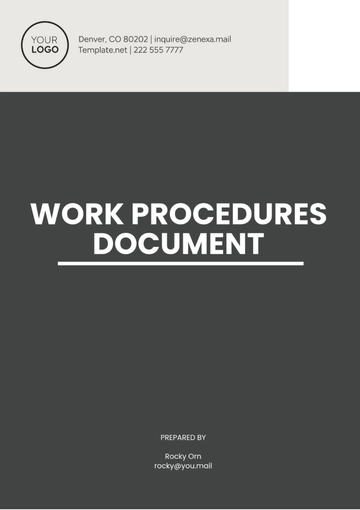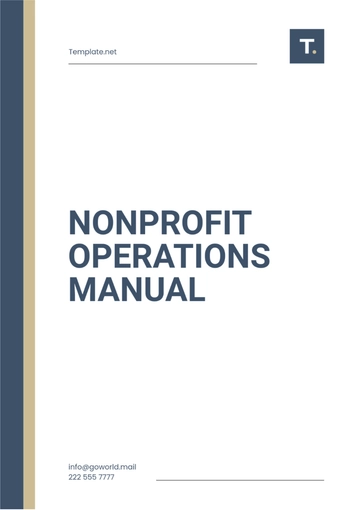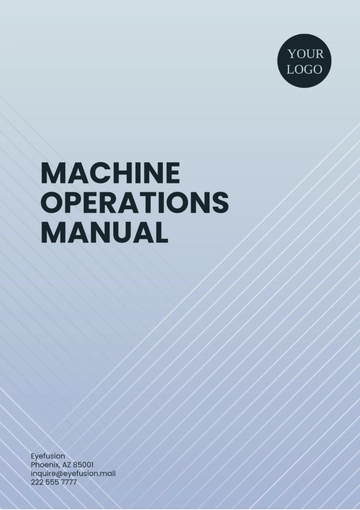Free Amusement Park Manual

I. Introduction
Welcome to the Amusement Park Ride Operation Manual for [Your Company Name]. This document serves as a comprehensive resource for ride operators, supervisors, and maintenance personnel. It outlines essential guidelines and protocols to ensure the safe and efficient operation of all amusement park rides. Our primary focus is to create an enjoyable experience for our guests while maintaining the highest standards of safety and compliance with relevant U.S. laws and regulations.
The manual includes detailed setup instructions, operating procedures, safety protocols, and troubleshooting tips tailored to each ride in our park. Each section is designed to equip operators with the knowledge and skills necessary to manage rides effectively, respond to emergencies, and maintain equipment. By following these guidelines, we aim to foster a culture of safety, enhance operational efficiency, and ensure a positive experience for all visitors. Thank you for being part of [Your Company Name], and for your commitment to upholding our safety standards and providing exceptional service to our guests.
II. Setup Instructions
To ensure the safe and correct setup of the amusement park ride, follow these detailed steps meticulously:
Inspect Ride Components: Begin by conducting a thorough visual inspection of all ride components, including the structural frame, seating, and safety restraints. Look for any signs of visible damage, wear, or corrosion that may affect the ride's operation. Pay special attention to areas that experience high stress during operation.
Tighten Bolts and Fasteners: After inspecting the ride, ensure that all bolts, screws, and fasteners are tightened securely according to the manufacturer's specifications. Use a torque wrench where applicable to guarantee that each component is fixed correctly, as loose hardware can lead to ride failure.
Check Control Systems: Test all control systems, including the start/stop mechanisms, emergency stop buttons, and safety interlocks. Verify that the ride's operational controls are functioning correctly and that safety features are operational. This step is crucial for ensuring operator control and passenger safety.
Place Safety Barriers: Surround the ride's perimeter with safety barriers to prevent unauthorized access during setup and operation. Barriers should be clearly marked and constructed from sturdy materials to withstand any accidental impacts. Ensure that signage indicating restricted access is displayed prominently.
Conduct a Test Run: Before allowing passengers to board, perform a comprehensive test run of the ride without any passengers. Monitor all functions, including speed, braking, and safety mechanisms, to verify the ride operates smoothly and meets safety standards. Listen for any unusual sounds and check for any erratic behavior during the test.
III. Operating Procedures
To ensure the safe and efficient operation of the amusement park ride, adhere to the following operating procedures:
Verify Passenger Safety Requirements: Before allowing passengers to board, ensure that each individual meets the ride's safety requirements, including height, weight, and health restrictions. Use clear signage to communicate these requirements and, if necessary, conduct a quick assessment to verify compliance.
Secure Harnesses and Safety Equipment: Once passengers are seated, carefully secure all harnesses, lap bars, and safety equipment according to the manufacturer's guidelines. Ensure that each safety restraint is snug and properly engaged. Conduct a final check to confirm that all passengers are secured before starting the ride.
Communicate Safety Instructions: Inform passengers of essential safety instructions and expected behavior during the ride. Clearly outline rules such as keeping hands and arms inside the ride at all times, remaining seated until the ride comes to a complete stop, and following any additional specific guidelines for that particular ride. Make sure that passengers understand these instructions before the ride begins.
Start the Ride: Use the main control panel to start the ride, ensuring that you follow the pre-determined operating procedures. Remain vigilant and monitor the ride continuously while it is in operation. Be attentive to any unusual sounds, vibrations, or passenger behavior that may indicate a problem.
Emergency Stop Procedures: In the event of any irregularities, emergencies, or signs of distress among passengers, immediately stop the ride using the emergency stop button. Follow the established emergency procedures to ensure the safety of all guests. Once the ride has stopped, assess the situation and take appropriate action, which may include evacuating passengers or calling for assistance from maintenance or security personnel.
IV. Troubleshooting
If you encounter issues with the ride operation, refer to this troubleshooting guide:
Issue | Possible Cause | Solution |
|---|---|---|
Ride does not start | Power supply issue | Check the main power switch and ensure it is turned on. Verify power connections. |
Unusual noises | Loose components | Stop the ride. Inspect and tighten all loose bolts and components. |
Control panel malfunction | Electrical fault | Turn off the ride and check for blown fuses or circuit issues. Contact maintenance if necessary. |
Always ensure passenger safety is the top priority. In any situation where troubleshooting steps do not resolve the issue, promptly consult with technical support or a qualified maintenance technician. Maintaining open communication with the team and adhering to safety protocols will help prevent accidents and ensure the ride operates smoothly. Your vigilance and commitment to safety are vital in providing a secure environment for all guests at [Your Company Name].
- 100% Customizable, free editor
- Access 1 Million+ Templates, photo’s & graphics
- Download or share as a template
- Click and replace photos, graphics, text, backgrounds
- Resize, crop, AI write & more
- Access advanced editor
Streamline your operations with Template.net’s Amusement Park Manual Template. This customizable and editable template from Template.net provides a detailed framework for outlining park procedures and guidelines. Fully editable in our Ai Editor Tool, you can tailor each section to meet your specific operational needs, ensuring a clear and comprehensive manual for your staff.





























